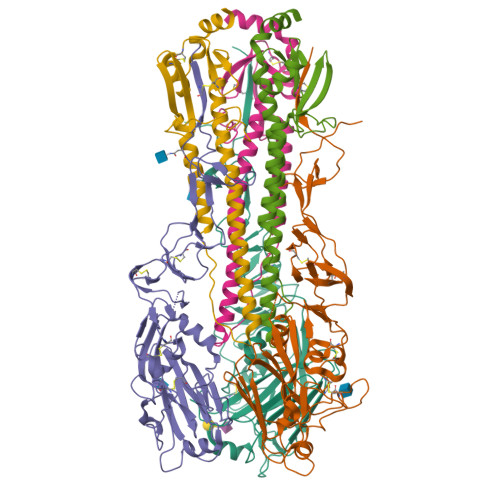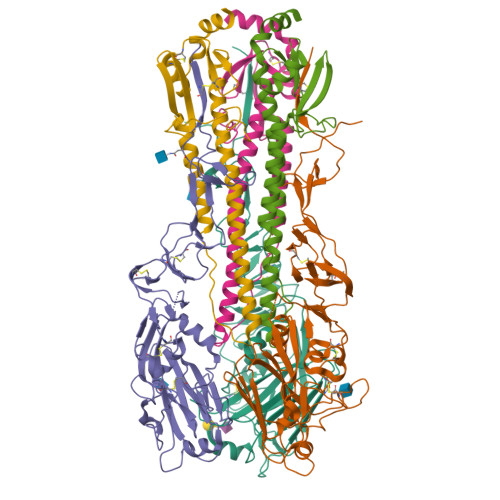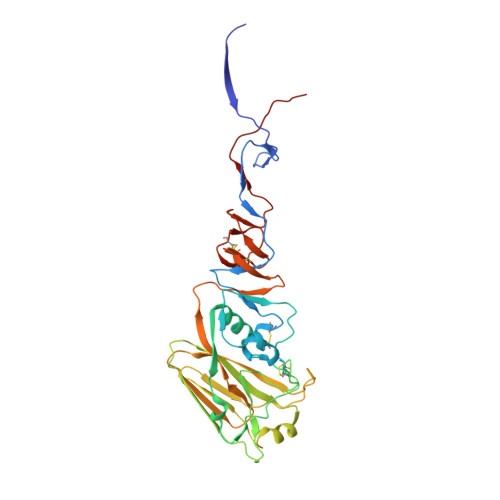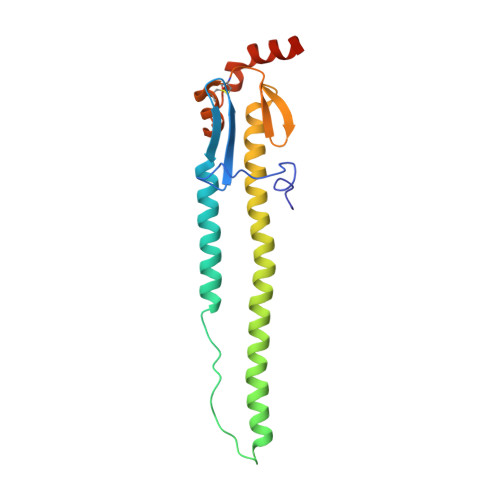A single mutation in Taiwanese H6N1 influenza hemagglutinin switches binding to human-type receptors.
de Vries, R.P., Tzarum, N., Peng, W., Thompson, A.J., Ambepitiya Wickramasinghe, I.N., de la Pena, A.T.T., van Breemen, M.J., Bouwman, K.M., Zhu, X., McBride, R., Yu, W., Sanders, R.W., Verheije, M.H., Wilson, I.A., Paulson, J.C.(2017) EMBO Mol Med 9: 1314-1325
- PubMed: 28694323
- DOI: https://doi.org/10.15252/emmm.201707726
- Primary Citation of Related Structures:
5T08, 5T0B, 5T0D, 5T0E - PubMed Abstract:
In June 2013, the first case of human infection with an avian H6N1 virus was reported in a Taiwanese woman. Although this was a single non-fatal case, the virus continues to circulate in Taiwanese poultry. As with any emerging avian virus that infects humans, there is concern that acquisition of human-type receptor specificity could enable transmission in the human population. Despite mutations in the receptor-binding pocket of the human H6N1 isolate, it has retained avian-type (NeuAcα2-3Gal) receptor specificity. However, we show here that a single nucleotide substitution, resulting in a change from Gly to Asp at position 225 (G225D), completely switches specificity to human-type (NeuAcα2-6Gal) receptors. Significantly, G225D H6 loses binding to chicken trachea epithelium and is now able to bind to human tracheal tissue. Structural analysis reveals that Asp225 directly interacts with the penultimate Gal of the human-type receptor, stabilizing human receptor binding.
Organizational Affiliation:
Departments of Molecular Medicine & Immunology and Microbiology, The Scripps Research Institute, La Jolla, CA, USA.





















